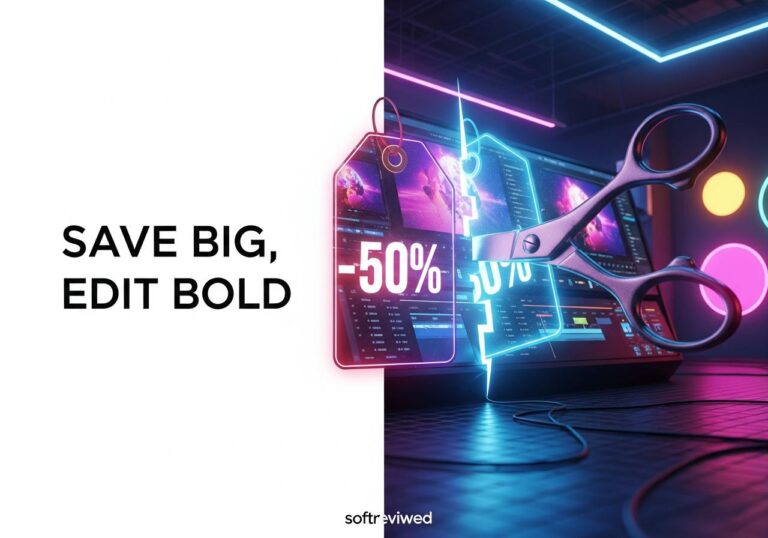OpenAI & Broadcom: Strategic AI Chip Partnership
A landmark partnership reshaping the AI hardware landscape and challenging Nvidia’s dominance
Massive Investment
10 gigawatts of custom AI accelerators worth $10+ billion in a multi-year strategic partnership between OpenAI and Broadcom, representing one of the largest AI infrastructure investments to date.
Deployment Timeline
Initial deployments scheduled to begin in the second half of 2026, with full implementation expected to be complete by the end of 2029, establishing a long-term hardware strategy for OpenAI.
Partnership Structure
OpenAI designs the chips and systems architecture while Broadcom develops, deploys, and provides comprehensive networking solutions, leveraging each company’s core strengths.
Internal Use Strategy
Chips will be used internally only (not commercialized), following a similar strategy to Google’s TPUs and Amazon’s Graviton processors, giving OpenAI greater control over its AI infrastructure.
Market Impact
The announcement sent shockwaves through the tech industry:
Architectural Shift
The partnership emphasizes an Ethernet-based networking architecture, representing a strategic shift from traditional GPU-centric clusters and potentially challenging Nvidia’s NVLink and InfiniBand technologies.
OpenAI Takes Control: Building Custom Chips to Power the AI Future
OpenAI just made a bold move that signals a fundamental shift in how AI companies build their technology. The organization behind ChatGPT announced a partnership with semiconductor giant Broadcom to design and deploy 10 gigawatts of custom AI accelerators—a massive infrastructure commitment that positions OpenAI alongside tech titans like Google, Amazon, and Meta in controlling their own hardware destiny.
This isn’t just another business deal. It’s OpenAI taking the reins of its entire technology stack, from the software that powers ChatGPT to the physical chips that make it all possible. The collaboration, valued in the billions of dollars, represents one of the most significant moves toward vertical integration in the AI industry.
Understanding the Scale of This Partnership

When we talk about 10 gigawatts of computing power, we’re discussing something truly staggering. To put this in perspective, that’s enough electricity to power approximately 8 million homes for an entire day. For comparison, the entire state of Nevada uses about 6.65 gigawatts at peak demand.
OpenAI and Broadcom have been quietly working together for 18 months, refining chip designs specifically tailored for OpenAI’s inference workloads—the process of running AI models to answer the 800 million people who use ChatGPT weekly. The first batch of these custom systems will start rolling out in the second half of 2026, with full deployment completed by the end of 2029.
Think of it this way: if training an AI model is like teaching someone a skill, inference is like that person using the skill over and over again every single day. OpenAI currently runs on just over 2 gigawatts of power. This Broadcom deal alone will increase that capacity five times over.
The financial details remain under wraps, but industry insiders estimate the partnership is worth several billion dollars, potentially ranging between $2 billion and $9 billion. Some analysts suggest the total infrastructure could cost anywhere from $350 billion to $500 billion when you factor in all the associated expenses.
Breaking Free from the GPU Giants
For years, OpenAI has depended heavily on Nvidia’s powerful graphics processing units (GPUs) to train and run its AI models. While Nvidia chips are incredibly powerful, they’re also expensive, often in short supply, and designed to serve a broad range of customers—not optimized specifically for OpenAI’s unique needs.
Building custom chips allows OpenAI to embed everything it has learned from developing models like GPT-4 and ChatGPT directly into the hardware. OpenAI President Greg Brockman revealed that the company even used its own AI models to design the chips more efficiently, achieving massive reductions in component size that human engineers hadn’t managed.
Here’s what makes custom chips attractive for a company like OpenAI:
📌 Cost Efficiency: Industry estimates suggest building a 1-gigawatt data center costs around $50 billion, with approximately $35 billion typically spent on chips alone—most of it going to Nvidia. Custom chips can cut those costs by 30% while improving efficiency.
📌 Performance Optimization: Unlike general-purpose GPUs that need to handle various tasks, custom accelerators can be fine-tuned specifically for running AI models, resulting in faster response times and better energy efficiency.
📌 Supply Security: With their own chips, OpenAI doesn’t have to compete with every other AI company for limited GPU supplies. They control their production timeline and capacity.
📌 Hardware-Software Harmony: When you design both the chip and the AI model, you can optimize how they work together in ways that aren’t possible with off-the-shelf hardware.
How This Partnership Actually Works
OpenAI handles the brain work—designing the chip architecture and deciding exactly what features and capabilities these accelerators need. Broadcom brings its decades of expertise in manufacturing, networking, and system integration to turn those designs into real, working hardware.
But the collaboration goes beyond just chips. The systems will use Broadcom’s complete suite of Ethernet, PCIe, and optical connectivity solutions. This is significant because it challenges Nvidia’s proprietary NVLink networking technology, which tightly couples Nvidia GPUs together.
By using open Ethernet standards instead of proprietary networking, OpenAI gains flexibility. They can scale their infrastructure without being locked into a single vendor’s ecosystem. It’s like choosing a smartphone with a standard USB-C port instead of a proprietary charging cable—you have more options and aren’t dependent on one company.
Taiwan Semiconductor Manufacturing Company (TSMC), the world’s largest contract chipmaker, will manufacture these chips using advanced 3-nanometer process technology. The chips are expected to feature high-bandwidth memory and specialized architectures optimized for AI inference—running trained models rather than training new ones from scratch.
The Difference Between Training and Inference
Understanding why OpenAI is focusing on inference chips helps explain this strategy. AI workloads generally fall into two categories:
Training is like teaching a student—you feed massive amounts of data into algorithms over weeks or months, requiring enormous computational power all at once. This is a one-time investment for each model version.
Inference is like that student taking tests every day—processing individual queries or requests in real-time. While each inference task is lighter than training, you’re doing billions of them continuously as millions of users interact with ChatGPT.
OpenAI reportedly spends more per week running ChatGPT (inference) than it cost to train the entire model in the first place. Sam Altman revealed ChatGPT processes around 100 billion tokens per day—roughly 36 trillion per year. That means OpenAI’s annual inference compute is now on par with its training compute usage.
Custom chips excel at inference workloads because you can optimize them for speed, low latency, and energy efficiency rather than raw training power. They’re specialized tools built for a specific job, whereas GPUs are like Swiss Army knives—versatile but not always the most efficient for every task.
Why This Matters Beyond OpenAI
OpenAI’s move reflects a broader trend reshaping the entire AI industry. Tech giants are increasingly recognizing that controlling your hardware stack is essential for staying competitive:
✅ Google pioneered this approach with its Tensor Processing Units (TPUs), custom chips that now power most of Google’s AI workloads.
✅ Amazon developed Trainium and Inferentia chips for AWS, offering cloud customers alternatives to expensive Nvidia GPUs.
✅ Meta created the Meta Training and Inference Accelerator (MTIA) to power its massive recommendation systems and AI features across Facebook and Instagram.
✅ Microsoft is developing its own Maia chips while simultaneously investing heavily in OpenAI and Nvidia.
This wave of custom chip development is challenging Nvidia’s dominance, though it’s important to note that Nvidia still holds an estimated 70% to 90% of the AI chip market. Their CUDA software ecosystem and continuous hardware innovation make them formidable. However, custom chips are chipping away (pun intended) at the margins, especially for companies with massive, predictable workloads.
For businesses and developers, this competition is good news. More players in the market typically means lower prices, more innovation, and better performance across the board.
The Strategic Chess Game: OpenAI’s Infrastructure Bets
The Broadcom partnership is just one piece of OpenAI’s massive infrastructure puzzle. In recent weeks, the company has announced approximately $1 trillion worth of AI infrastructure deals:
➡️ $100 billion investment from Nvidia to provide 10 gigawatts of GPU-powered compute through the Vera Rubin platform
➡️ $300 billion cloud infrastructure agreement with Oracle for 4.5 gigawatts over five years as part of the Stargate Project
➡️ $90 billion deal with AMD for 6 gigawatts of AMD Instinct GPUs starting in 2026, including potential equity stakes
➡️ Billions with Broadcom for 10 gigawatts of custom chips and networking
Add it all up, and OpenAI is committing to roughly 26 to 33 gigawatts of total infrastructure capacity—a 15-fold expansion from its current 2 gigawatts. This represents one of the largest infrastructure buildouts in technology history.
Sam Altman describes this as a “very aggressive infrastructure bet” requiring “the whole industry, or a big chunk of the industry, to support it.” The strategy is clear: diversify suppliers, control critical technology, and ensure enough computing power to achieve OpenAI’s long-term vision of artificial general intelligence (AGI).
What This Means for You and Your Business
If you’re wondering how this affects everyday users or businesses, here’s the practical impact:
Faster AI Services: Custom chips optimized for inference mean ChatGPT and future OpenAI products should respond more quickly, handling more users simultaneously without slowdowns.
Lower Costs Eventually: As OpenAI reduces its reliance on expensive Nvidia GPUs and scales its custom infrastructure, those cost savings could translate into more affordable API pricing for developers and businesses building AI-powered applications.
More Innovative Features: With greater control over hardware performance, OpenAI can experiment with more complex AI capabilities that might not be feasible on standard chips—think better reasoning, longer context windows, or multimodal features combining text, images, and video.
Reliability and Availability: Owning your chip supply chain means fewer shortages and more predictable access to computing resources, which translates to better uptime and service quality.
Competitive Pressure on the Entire Industry: As OpenAI, Google, Amazon, and Meta all push custom chip boundaries, it forces Nvidia and AMD to innovate faster and potentially lower prices to stay competitive.
For small businesses and startups building AI products, this infrastructure expansion matters because it supports the cloud services and API platforms you rely on. As hyperscalers deploy more efficient custom chips, cloud AI services from providers like Microsoft Azure (which partners with OpenAI) could become more accessible and cost-effective.
The Challenges and Risks Ahead
Building custom chips isn’t a guaranteed success story. The path is filled with potential pitfalls:
⛔️ Astronomical Development Costs: Designing a single version of a new chip can cost around $500 million. When you factor in software, infrastructure, and peripheral systems, costs can easily double to $1 billion per chip generation.
⛔️ Long Development Timelines: From initial design to mass production typically takes years, not months. OpenAI’s first chips won’t arrive until late 2026, and full deployment stretches to 2029.
⛔️ Manufacturing Complexity: Even tech giants like Microsoft and Meta have encountered setbacks with custom chip projects that failed to match Nvidia’s performance or encountered production issues.
⛔️ Talent Scarcity: Chip design requires highly specialized engineers. OpenAI’s chip team, led by Richard Ho (formerly of Google), has grown to about 40 members—still much smaller than the thousands employed by Nvidia, AMD, or Apple’s chip divisions.
⛔️ Dependency Shift: While OpenAI reduces reliance on Nvidia, it still depends heavily on TSMC for manufacturing and Broadcom for development. The “center of power moves from one giant to another” rather than achieving true independence.
⛔️ Rapid AI Evolution: AI architectures are evolving quickly. Custom chips optimized for today’s transformer models might become obsolete if fundamentally new AI approaches emerge. This is why GPUs remain attractive—they’re more flexible and adaptable.
Industry analysts note that despite these custom chip initiatives, Nvidia’s dominance isn’t seriously threatened yet. The company’s mature software ecosystem (CUDA), continuous hardware innovation, and proven performance at scale give it significant advantages that custom chips will take years to match.
The Broader Implications for AI Development
OpenAI’s vertical integration strategy represents a bet that owning the full stack—from models to chips to data centers—is essential for building the future of AI. Sam Altman has been vocal about his vision for “abundant intelligence” where AI becomes a fundamental utility like electricity.
In a blog post, Altman outlined an ambitious goal: create a factory that can produce a gigawatt of new AI infrastructure every week. He wrote, “If AI stays on the trajectory that we think it will, then amazing things will be possible. Maybe with 10 gigawatts of compute, AI can figure out how to cure cancer. Or with 10 gigawatts of compute, AI can figure out how to provide customized tutoring to every student on earth.”
This vision requires enormous infrastructure investments. The global data center industry is projected to require $6.7 trillion worldwide by 2030 to keep pace with AI demand. By 2026 alone, data center accelerator markets are expected to exceed $300 billion.
The AI chip market specifically could surpass $150 billion in 2025 and potentially reach $1.3 trillion by 2030, according to market forecasts. Chip sales are soaring, driven primarily by generative AI and data center buildouts, even as traditional PC and mobile markets remain relatively flat.
Comparing Custom Chips to Nvidia GPUs
Let’s break down the key differences in simple terms:
Nvidia GPUs are like powerful sports cars—fast, versatile, and ready to handle almost any road condition. They’re designed for a wide range of AI tasks (training, inference, graphics, scientific computing) and work across many different AI architectures. The CUDA software ecosystem is mature and well-supported, with thousands of developers familiar with it. However, they’re expensive, consume significant power, and aren’t always the most efficient for specialized tasks.
Custom AI Chips are like Formula 1 race cars built for a specific track—incredibly fast and efficient for their intended purpose, but less versatile. They’re optimized for particular workloads (like running ChatGPT queries), consume less power for those tasks, and can be significantly more cost-effective at scale. The downsides? They require massive upfront investment, take years to develop, and aren’t easily adaptable if AI technology shifts in unexpected directions.
Think of it this way: If you’re a delivery company making the same route thousands of times per day, designing a custom vehicle optimized exactly for that route makes sense. But if your routes change frequently, a standard truck is more practical. OpenAI is betting its workloads are predictable enough to justify the custom approach.
What’s Next in the AI Chip Race
The next few years will be critical in determining whether custom chips can truly compete with Nvidia’s established dominance. Key developments to watch:
👉 2026 Deployments: OpenAI’s Broadcom chips begin rolling out in late 2026. Performance benchmarks comparing them to Nvidia’s latest GPUs will be closely watched.
👉 Inference Workload Growth: Industry analysts predict inference workloads will comprise 60% to 70% of all AI computing by 2027, making custom inference chips increasingly attractive.
👉 Advanced Manufacturing: TSMC and other manufacturers are pushing toward 2-nanometer process technology and co-packaged optics, which could dramatically improve chip performance and energy efficiency.
👉 Edge AI Expansion: Beyond data centers, specialized AI chips are proliferating in edge devices—smartphones, autonomous vehicles, industrial robots, and smart cameras. AI-enabled PCs are projected to make up 43% of all computer shipments by the end of 2025.
👉 Geopolitical Factors: US-China competition over AI chip technology, export controls, and government investments in domestic semiconductor manufacturing will shape global supply chains.
👉 Emerging Architectures: Technologies like neuromorphic chips (inspired by brain structure) and quantum computing could disrupt both traditional GPUs and current custom chip approaches.
Understanding the Business Model Behind This Move
OpenAI’s chip strategy makes financial sense when you understand the economics. The company is currently spending astronomical amounts on computing infrastructure—reportedly more per week on inference than it initially cost to train GPT-4.
By controlling chip design and manufacturing partnerships, OpenAI can potentially:
Reduce per-query costs by optimizing hardware specifically for how ChatGPT and future models actually work, rather than using general-purpose chips that include capabilities OpenAI doesn’t need.
Negotiate better pricing with multiple suppliers. When you’re dependent on a single vendor, you have limited leverage. OpenAI’s deals with Nvidia, AMD, and Broadcom create competition for its business.
Scale more predictably. With custom chips, OpenAI knows exactly what performance and capacity it’s getting, making long-term planning easier.
Capture more value. If OpenAI can reduce infrastructure costs while maintaining or improving service quality, those savings flow directly to profitability or can be reinvested in research and development.
The circular economics are interesting too: Nvidia invested $100 billion in OpenAI, much of which OpenAI then uses to purchase Nvidia chips. By developing custom chips, OpenAI can potentially redirect some of that spending to internal infrastructure that it fully controls.
The Environmental Angle: Power and Efficiency
One often-overlooked aspect of this chip partnership is energy efficiency. AI data centers consume enormous amounts of electricity, and that consumption is growing expon







